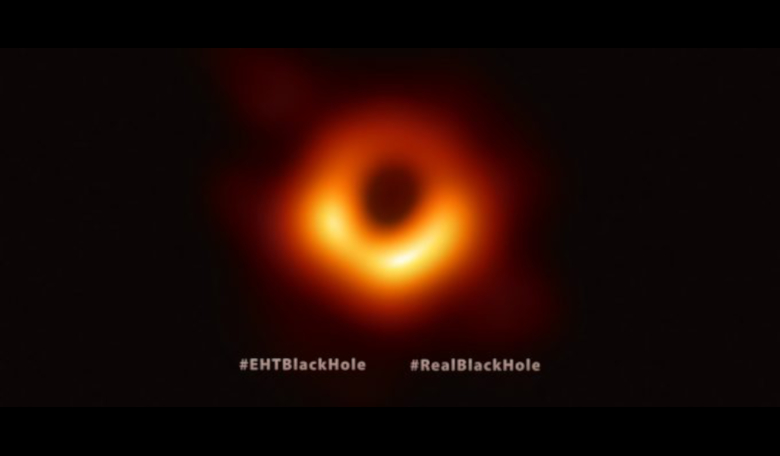After almost two years of putting together the data, the guzzling gravitational giant at the centre of M87 – a galaxy 500 billion billion kilometres away from Earth – is invisible no more, as in simultaneous press conferences held around the world, scientists reveal what is likely to be one of the biggest shadows ever imaged – that of a supermassive black hole.
The stunning picture, which represents 'a huge breakthrough for humanity', has been made possible by the Event Horizon Telescope (EHT); an Earth-sized virtual telescope made up of eight radio observatories that spreads across the globe. It is the culmination of hundreds if not thousands of hours worth of work by 200 international scientists from institutions across the world.
European Research Commissioner Carlos Moedas, who announced the discovery for ESO said: “The history of science will be spilt into the time before the image and the time after the image,” – a quote from his colleague Michael Kramer also from the ERC, said Moedas.
Predicted almost a century ago by Einstein’s Theory of General Relativity, black holes power some of the most extreme phenomena in the Universe and yet, providing direct evidence of their existence, has yielded nothing concrete so far. Last year ESO’s GRAVITY instrument observed a ring of extremely fast moving material racing around near Sag A*’s event horizon at about 30 percent the speed of light.
As tantalising as the observation was, the massive cavernous abyss of the black hole still remained elusive. Even before that, the Laser Interferometer Gravitational-Wave Observatory (LIGO) detected gravitational waves emanating from the merger of two black holes. These ripples in the curvature of spacetime caused by some of the most violent and energetic processes in the Universe, were yet more indirect proof that something huge but unseen were lurking potentially everywhere the cosmos.
But now the impossible has been made possible. So just how difficult has it been to provide an image of an object that creates a hole so large in the fabric of space-time that the laws of physics breaks down?
Monika Moscibrodzka from Radbould University who was speaking at one of the EHT live conferences said: “You may wonder how we made this image in the first place. EHT data is like an incomplete puzzle set. We actually only see pieces of the real true image and we have to fill in the gaps of the missing pieces to construct the physically image which matches the the data. It is a very difficult process. It’s almost a life-changing experience to see the image of a black hole shadow popping out on the screen on our ordinary laptops.”
Now that scientists have an actual image of one, what can we learn about these ferocious feeding machines? “There is something peculiar about this ring,” said Moscibrodzka. “It’s not really a full ring - it’s much brighter at the bottom. Why is that? Our models told us immediately that this type of structure can only be formed if the source, or something in the source is rotating. What is rotating? It could be the black hole or the matter around it. Or both can be rotating. At the moment, the images are not yet sharp enough to estimate or calculate the exact speed of the rotation, but this image gives you a sense of the direction of rotation, which is clockwise.”
The analysis of M87 – a black hole with one of the highest known masses for such an object and is billions of times more massive than the Sun – is not yet over as the team behind this initial discovery stated that the data will be released to the scientific community in the next week, so that the result can be verfied.
None of this would have been possible without the unwavering support of all of those involved – and the list of involved is an impressive one. The telescopes contributing to this result were ALMA, APEX, the IRAM 30-meter telescope, the James Clerk Maxwell Telescope, the Large Millimeter Telescope Alfonso Serrano, the Submillimeter Array, the Submillimeter Telescope, and the South Pole Telescope 7. Petabytes of raw data from the telescopes were combined by highly specialised supercomputers hosted by the Max Planck Institute for Radio Astronomy and MIT Haystack Observatory.
“We are giving humanity its first view of a black hole — a one-way door out of our Universe,” said EHT project director Sheperd S. Doeleman of the Center for Astrophysics, Harvard & Smithsonian. “We have achieved something presumed to be impossible just a generation ago. Breakthroughs in technology and the completion of new radio telescopes over the past decade enabled our team to assemble this new instrument — designed to see the unseeable.”











